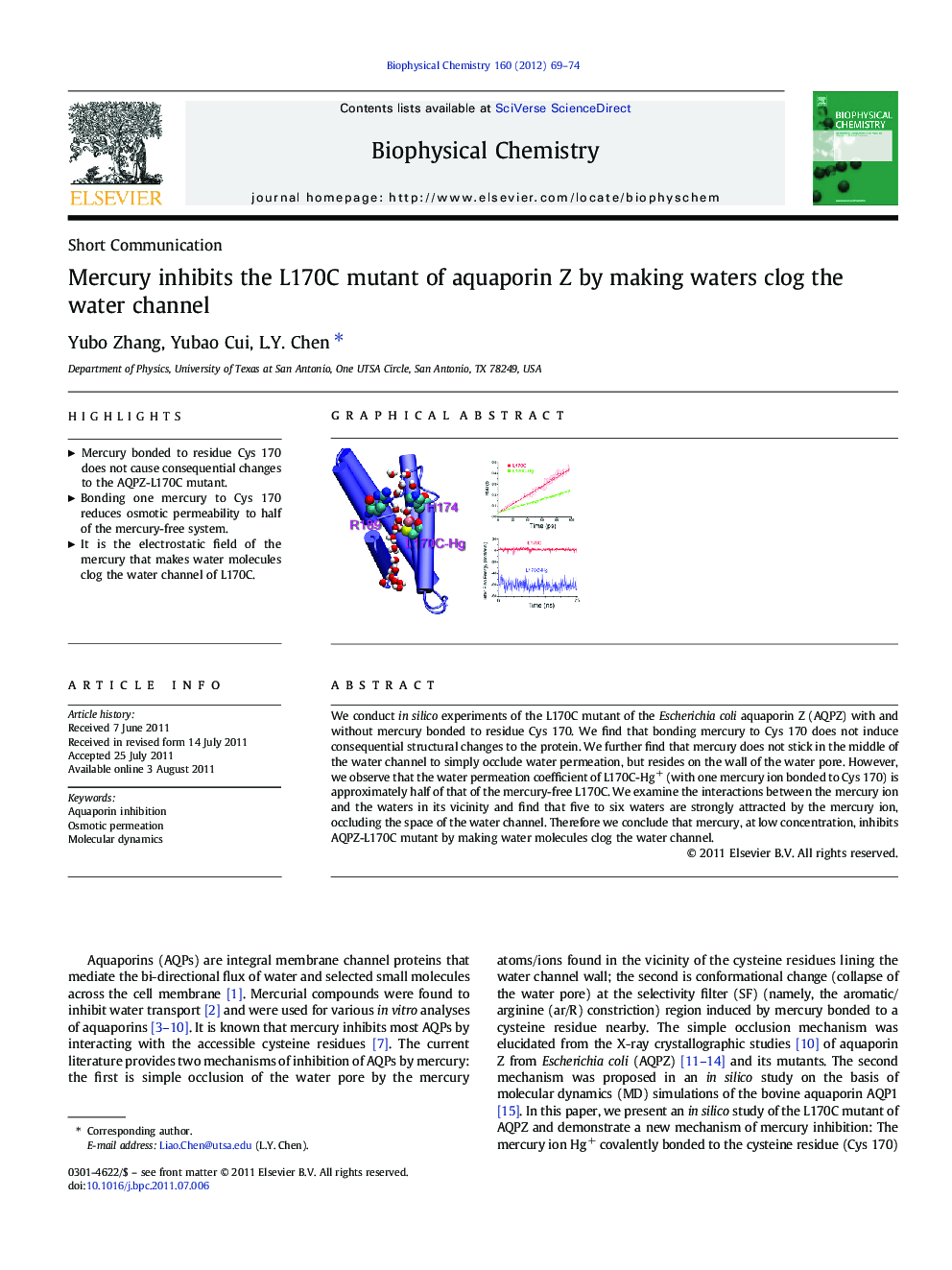| Article ID | Journal | Published Year | Pages | File Type |
|---|---|---|---|---|
| 5371281 | Biophysical Chemistry | 2012 | 6 Pages |
We conduct in silico experiments of the L170C mutant of the Escherichia coli aquaporin Z (AQPZ) with and without mercury bonded to residue Cys 170. We find that bonding mercury to Cys 170 does not induce consequential structural changes to the protein. We further find that mercury does not stick in the middle of the water channel to simply occlude water permeation, but resides on the wall of the water pore. However, we observe that the water permeation coefficient of L170C-Hg+ (with one mercury ion bonded to Cys 170) is approximately half of that of the mercury-free L170C. We examine the interactions between the mercury ion and the waters in its vicinity and find that five to six waters are strongly attracted by the mercury ion, occluding the space of the water channel. Therefore we conclude that mercury, at low concentration, inhibits AQPZ-L170C mutant by making water molecules clog the water channel.
Graphical abstractDownload full-size imageHighlights⺠Mercury bonded to residue Cys 170 does not cause consequential changes to the AQPZ-L170C mutant. ⺠Bonding one mercury to Cys 170 reduces osmotic permeability to half of the mercury-free system. ⺠It is the electrostatic field of the mercury that makes water molecules clog the water channel of L170C.
